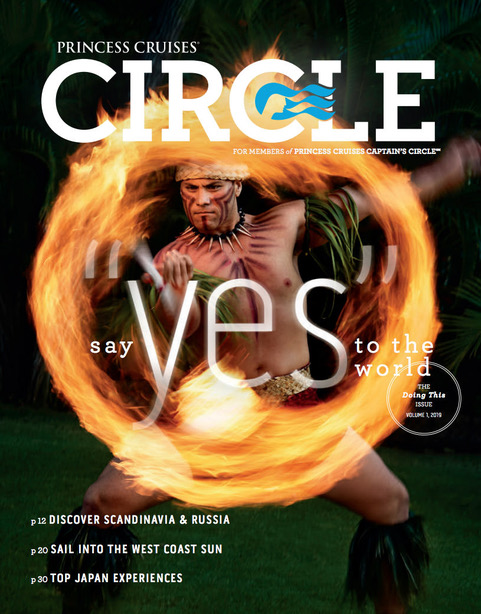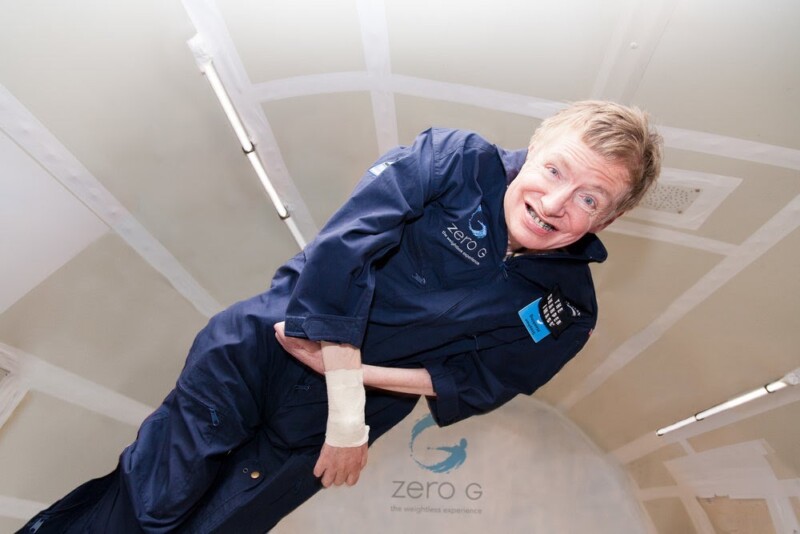How Important is a Photographer’s Location to Their Career?
![]()
While photographers hone their skills, brand their services, and optimize their marketing to be more successful, another factor can have as much of an impact as all of the above: their home base. A photographer’s location can also dictate the kind of clients and jobs a photographer can access.
Big media centers like New York and London still draw a lot of work, and many photographers cut their teeth there. However, budgets have tightened, people are more aware of their carbon footprint, the internet makes it easy to find photographers and crew anywhere in the world, and the backlash against parachuting photographers in from far away are a few of the factors that have resulted in a trend towards hiring local photographers, crew, and talent. And of course, the travel restrictions of the pandemic have only accelerated this trend.
But how far has this trend percolated through the industry? We surveyed some of their photographers and clients to see how they make their locations work for them.
Table of Contents
The Clients’ Perspective on a Photographer’s Location
Daniella Nilva Cunningham, a freelance producer and director of photography, confirmed that budgets often decide if a photographer is flown somewhere or whether somebody local is hired.
As producers, we often have limited budgets for travel. Proximity to a major airport or driving distance to several major cities will often increase the likelihood of being hired. We want to hire the best talent for the job, but location and budget might sometimes impact the final decision. In addition, a photographer’s knowledge of specific locations is often just as important as easy access. Often, a client will accept a similar-looking location if the visual scenery matches their needs.
Della Rollins is a photo editor at Studio Wyse, a collaborative design studio specializing in narrative-driven editorial solutions. Her stance is similar to Daniella’s.
Editorially speaking, with budgets being tight in the magazines I work on (and only getting tighter), a photographer’s location is absolutely crucial since we don’t have money to send them to different regions for a story. We have to rely on local talent, and the best photographers are able to collaborate with me to talk about where to photograph since I’m not always familiar with the city we’re photographing in (which is actually a value-add to a shoot for me as a photo editor).
Crossing over to the side of advertising agencies, Julie Rosenoff, Art Production Manager at Havas, dug into scenarios where a photographer’s location could be considered and others where it might not.
It depends on the type of project. For example, if it’s a piggyback photo shoot (adding on to a TVC production), we would focus on local photographers without flying someone in. This is mostly due to the photographers’ knowledge of the area and shoot location, but also the impact on the budget.
If it’s a project where the photographic aesthetic is paramount to the vision of the campaign, then it doesn’t matter where the photographer is located. We will choose the best person for the job. Nowadays, many photographers will bid as a local, if they are bidding against locals… Again, if a photographer knows that their travel costs are going to price them out of the job, as they may be the only one estimating for it, they need to weigh whether it’s worth losing the job over airfare or a couple of nights in a hotel.

The Photographers’ Perspective
With climate change on everyone’s mind, a production’s carbon footprint is becoming a factor in more decisions. For example, avoiding unnecessary flights is becoming a priority as it is becoming increasingly socially unacceptable. It’s driven by individuals who think reducing carbon emissions is the right thing to do and companies who feel that minimizing their carbon footprint is a good way to demonstrate corporate social responsibility.
The pandemic seemed to accelerate this trend: with restricted travel, shoots had to be done by locals. It also normalized remote working. Entire assignments were done remotely with the photographer in a different location, directing the shoot via video call, and using their laptop or phone camera. Chris Crisman, a Philadelphia-based advertising photographer, expanded on this latest shift.
With the rise of remote communication technology, it’s becoming increasingly common for clients to work with photographers and other creatives not located in their city. Ultimately, the decision of whether to work with a local or non-local photographer will depend on the specific needs and preferences of the client, as well as the photographer’s ability to meet those needs.
With remote work becoming more accepted, photographers are managing studio photography in less traditional ways, with St Louis-based Mark Katzman being one of them.
St. Louis is a very affordable real estate market, and therefore I have the luxury of a big studio which is definitely a plus for certain projects. Very recently, we were approached by a Pharma company to produce a library shoot. It needed to be in a medical setting, and we could have shot anywhere. We suggested fabricating the medical settings in our studio in St. Louis and tapped our local resources for a great house to shoot some of the lifestyle portions. The client took a leap of faith and went for it. The shoot went great. They were over the moon working in St. Louis. Of course, the city being named the 2022 Best Food City by Food and Wine Magazine does not hurt our cause.

Trends in the Industry
Talking to photographers and their clients, these points came up again and again.
- Generally, clients are happier than they used to be hiring a local photographer rather than flying one in.
- At the top end of advertising photography, companies still “parachute” their photographers and models to any location globally.
- Photographers are still drawn to big cities like NYC or London to establish themselves.
- Many photographers market themselves as being based in one of the media hotspots, and live one or two hours away, where the cost of living is cheaper or the quality of life is better.
- Some photographers describe themselves as living in more than one major market – like New York and Los Angeles.
- Increasingly, photographers can thrive in locations outside the big media centers, but they have to factor their location into their marketing strategy.
When Specialization Influences a Photographer’s Location
For many photographers, their location is often dictated by their specialty. For example, to work in high fashion, you may feel the need to be in New York, Paris, or London. To be an outdoor/adventure photographer, it might pay to be close to the Rocky Mountains. Jim Wright is a photographer steeped in the country music scene. He works all over the US, but many of his assignments take him to Nashville, the country music capital of the world.
My main market is the country music scene in Nashville. When I used to live in LA, Nashville was a two-day trip minimum with a lot more air time. After moving to Philadelphia, my trips to Nashville can be made in one day.
The Big Cities
The big cities may be the best cities for photographers. Metropoles such as New York City, San Francisco, London, and Paris are still a magnet for the biggest clients and photographers, with a lot of publishing, advertising, and media produced there. No doubt, there is a buzz working in these places, and the diversity and different influences are second to none in fostering creativity. It often helps photographers who are starting to develop their style. We also found that many of the most prestigious and highest-paid jobs are still commissioned and produced there. On the downside, photographers face steep competition and high living costs, often making it unsustainable in the long run.
Within Reach of Big Cities
Moving a drive away from these centers often gives photographers cheaper rents and living costs while still allowing them to work in the city. Chris reiterated this point.
We benefit from our proximity to NYC in that we can offer some cost savings on travel.
However, he shared that some clients may view Philadelphia as less glamorous or prestigious than larger cities like New York.
This could impact the perceived value of services offered by photographers based in Philadelphia. However, the lower cost of living often means that advertising photographers in cities such as Philadelphia have lower overhead costs for their business and can pass these savings onto their clients, which may be the difference between getting the job or not.
Photographers outside America experience a similar reality, as Australia-based James Horan explained. Being just outside a major city provides cost benefits and improves his quality of life.
I now live in Terrigal, a small coastal town on the Central Coast of NSW. It’s about 80km from Sydney’s CBD. I moved here with my family a few years ago as Sydney house prices are out of my league. We now own a large house with a big back garden near the beach. The highlight of my week is taking the kids to the beach after school to hang out with their friends. The trade-off is that most of my clients are in Sydney, so I now have a long commute of about 1.5 hours each way. But it makes no difference to my clients. Lots of them are still working remotely and will come to the city a few days a week. I think the pandemic has changed the mindset of where we base ourselves. For me, it’s better to live where I am now than near a busy city.
Secondary Cities
Being based in one of these, or within easy driving distance, used to work well for photographers. They had many prestigious clients, and there are still plenty of Fortune 500 companies in these locations where photographers face less competition. However, photographers reported that over the last decade, there has been a trend of many services, such as advertising, becoming more centralized. In particular, the trend for small advertising agencies is to cut back on the expense of having offices in secondary markets and consolidate their operations in their biggest cities, even as they continue to hire photographers locally.
Remote Areas
The pros and cons for photographers living in remote areas depend on their specialization. Generally, there are fewer assignments available locally, and they tend to be less prestigious and with small budgets. However, the cost of living is considerably lower (and for some photographers, the quality of life is higher) as well. Ultimately, it requires a thorough analysis of potential clients and the market to decide what works best for you. Here are a few points to consider:
- What kinds of businesses are in the area?
- Which major clients may shoot locally, and how can a photographer reach them?
- How can photographers reach national clients who may pay them to travel to locations?
A Photographer’s Location Through 1st Person Accounts
Case Study 1: St. Louis-based Lifestyle Photographer Mark Katzman
I attribute many of my early successes in the industry to being located in St. Louis. It was an affordable place to live while building my first portfolio. Still, more than that, it was far away from the big markets when national magazines like Forbes, Time, and Business Week were beginning to rely on stringers rather than staffers for their shoots.
For the first five years, from 1987 to 1992, I visited New York regularly – seeing up to 8 to 10 picture editors a day for a week (those were the days, right?). The doors opened, and they were willing to see me because they often did not have a reliable photographer in the Midwest. Over time I had a great client list of national publications. This opened the doors to working for the largest St. Louis companies at the time – Anheuser Busch, Nestle Purina, and Monsanto (ugh) – which opened the doors to assignments for local ad agencies. At the time, St. Louis had some great accounts – AT&T, Blockbuster, Jack Daniels, and TWA – and assignments were flowing.
Over the years, St. Louis lost many of its big ad accounts and agencies, and the work went with them – forcing me to look elsewhere. At that time, I partnered with Paula Gren, a national rep, and hit the sourcebooks pretty aggressively. Soon, I was working nationally and internationally.
Fast forward to today – less than 10% of my work comes from St. Louis. When you get to a certain level, especially as a location photographer, where you are based makes very little difference as we are hired for our styles.

Additionally, Mark can now offer big shoots to national clients at a lower cost due to his lower overhead in St. Louis.
Case Study 2: Vietnam-based Hospitality and Lifestyle Photographer Tim Gerard Barker
Most of my clients are international, with a presence in Vietnam or Asia. The majority are from either the US or Europe/UK, but I also have Australian, Dubai, and Singaporean clients. I have some Vietnamese clients as well, but many of them are connected to international hotel brands. On these shoots, the cost is often shared between the corporate office (located internationally) and the local hotel owner.
The advantage of being based in Vietnam is that it’s fairly simple to rank on the first page of Google via an English language search for a photographer or videographer in Vietnam; this is how most of my clients find me.
A disadvantage is that it is harder to specialize as I get a variety of requests. Many of my international clients only hire me for one-off shoots, so there is little repeat business. On occasion, though, I’ve worked with global clients in Vietnam who felt my style was a perfect match for their brand, so they commissioned me for shoots in Australia and Europe.
For most clients, the cost savings on international travel is the main reason they look for a Vietnam or Asian-based photographer or videographer, as well as trying to reduce the environmental impact of international travel, compared to sending their photographer.


Case Study 3: Miami-based Corporate and Portrait Photographer Steve Boxall
I have been based in Miami for over 20 years. For a long time, when people asked me where I lived, I said “on a plane,” as there was not much work for me locally. I used to work a lot for Zero-G, which does zero gravity flights, and a transport group, which meant traveling all over the country.
In Miami itself, work was limited to fashion and any shoot that needed a tropical background. However, it was very seasonal, as it’s too hot to do location shoots in summer.
This changed during the pandemic when it became a much more mature market for photography. Obviously, the center of photography in the US is New York, but during COVID-19, many creatives decided to move out of NY, and Miami was a popular destination. The city grew and had a big uptick in economic activity since then, leading to a lot more large advertising agencies being based here, and with it, more work for photographers.


The Future
Over the last few decades, much of the creative work has been centered in big media cities like New York and London, where the most prominent and influential agencies and publishers are located. However, the pandemic, digital technology, and a growing trend toward remote work may be dismantling the status quo. In general, clients are now happier to work remotely and hire locally instead of flying someone in.
As with everything, there are always trends and uncertainties, and much of the local work depends on the local economy, which can expand or contract. Photographers have always been exposed to trends and have had to adapt, whether due to technological changes such as the rise of smartphone photography and, more recently, AI-generated images, or precarious economic conditions. Consequently, it’s easy to envision scenarios where a photographer’s location may change multiple times throughout their career.
But the freelance nature of photographers’ work, the fact that they are constantly adapting to new trends, technology, and clients, makes them very resilient and able not just to weather these changes but use them as new opportunities to thrive.
About the author: Sonia Klug works at Wonderful Machine, an art production agency with a network of 600 photographers in 44 countries. The opinions expressed in this article are solely those of the author. This article was also published here. If you have any questions, or if you need help with your SEO, you can reach out to Wonderful Machine via email.